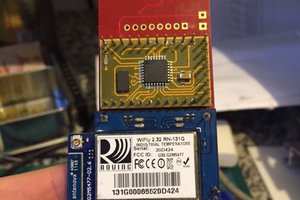Inspired by the OpenMV, Pixie, and ZynqBerry Projects, a Zynq based computer vision platform. Combining Zynq 7000 ARM+FPGA SoC, 4K CMOS image sensor, DDR3L memory, and completely integrated power controller, into a standalone integrated hardware computer visiosn platform.
The entire design is open source under the CERN open hardware licesnes. The whole thing is being developed using the nightly build of KiCAD!
Specs as follows:
- Xilinx XC7Z010-1CLG225C Dual Core ARM Cortex A9 667MHZ + Artix 7 FPGA 28K Cells
- OV04689-H67A 4K Camera Module
- Micron MT41K512M8DA-107-XIT:P DDR3L 512MB Memory Module
- USB 2.0 Connectivity
- GPIO headers for addons and hacking
- TPS659118A2ZRCT Power management controller IC

 AVR
AVR


 Paul Kocyla
Paul Kocyla

 E. N. Hering
E. N. Hering
 Dilshan Jayakody
Dilshan Jayakody
Hello, sir. It's so interesting project. Did you finish that?